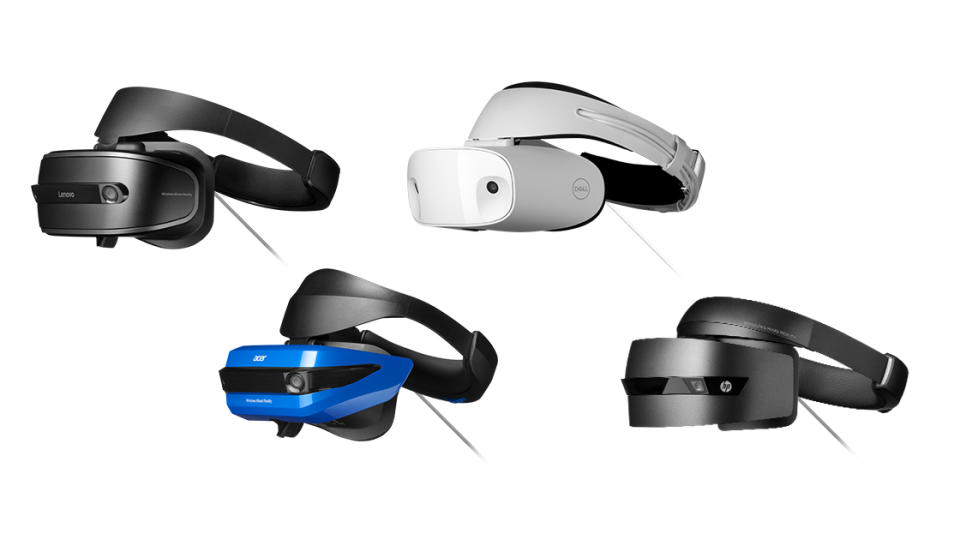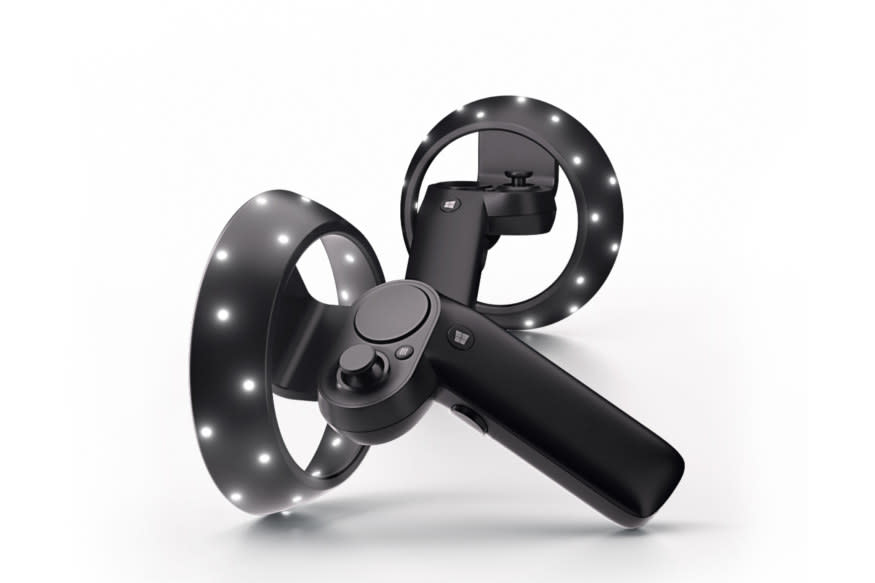Microsoft's mixed reality headsets could save VR
Microsoft (MSFT) has a plan to save VR — low-cost headsets and slick new controllers. It’s a heck of a game plan, and if it works it could put to bed any fears that the seemingly floundering virtual reality craze will fall to the wayside.
I got to play with a Windows Mixed Reality headset and the new controllers, and despite a few hiccups due to the fact that I was using pre-release software, the experience was surprisingly on par with what more expensive headsets offer.
VR at a lower price
Microsoft’s biggest selling point for its Windows Mixed Reality headsets is how inexpensive they will be compared to competing headsets like Facebook’s (FB) Oculus Rift and HTC Vive. The Rift costs $499, though it’s on sale for $399 for a limited time, while the Vive costs $599. Microsoft says headsets using its Windows Mixed Reality platform, on the other hand, will start at $399.
It’s important to note that both Oculus and HTC have significantly lowered the prices of their respective headsets since they debuted. The Oculus Rift originally cost $599 with an extra $280 for a pair of wireless motion controllers and a third camera for room-scale VR. The Vive, meanwhile, cost $800.

Sony’s PlayStation VR, on the other hand, costs $399, but you need to spend an extra $60 for a required camera and $100 for a pair of wireless controllers.
Adding to the cost reduction is the fact that Microsoft’s devices will work on a slew of laptops and PCs, not just high-end systems like the Rift and Vive. During my brief time with an Acer Windows Mixed Reality headset, a Microsoft rep let me play while connected to a high-powered laptop with a dedicated graphics chip, then switched the same headset over to a laptop with a less powerful integrated chip.
You’ll still be limited in terms of the games you can play with your headset, of course. A PC with integrated graphics won’t exactly be able to play the latest and greatest titles, but you’ll still get at least some functionality out of it.
Set up is easier
I’ve used the HTC Vive, Oculus Rift and PSVR in my apartment and after playing with them for a few days promptly took them apart and put them away until I found a new game to play. The reason? They’re too cumbersome.
With the wires connecting the headset, the wires connecting the cameras and the power cables, your head ends up looking like Predator’s. Microsoft is aiming to fix that by cutting down on the wires required for its headsets, so you’ll be able to quickly set-up and take apart a Windows Mixed Reality kit faster than its competitors.

I found the Acer headset I wore extremely lightweight, though it did begin to fog up a bit toward the end of my roughly 30-minute demo just as competing headsets have. Microsoft’s controllers were largely comfortable and easy to handle, though the positioning of the Windows button, which takes you out of games, was a bear to locate at times.
That’s not to say that Microsoft’s offering is simple. There’s still a wire connecting you to your PC, and other companies like Facebook are working on wireless versions of their headsets, but for now Microsoft’s offering looks relatively simple to put together.
The content
I’m a big fan of virtual reality. The games and experiences I’ve played have largely been a blast. But nothing I’ve played so far has managed to grab me quite like a traditional on-screen game.
Microsoft is aware of that and is hoping its own stable of games can improve the situation. The company has confirmed that it’s bringing its massive “Halo” franchise to its headsets, as well as the mega-hit “Minecraft.”
On top of that, Microsoft says it’s working with the hugely popular Steam gaming service, which is also available with the Vive and Rift. If Microsoft can ensure that it provides enough top-shelf content for Windows Mixed Reality headsets, it might be able to push VR beyond its current state as a niche and further into the mainstream.
Microsoft says its headsets will be available in time for the holiday shopping season, so stay tuned for my in-depth review in the coming months.
More from Dan:
Fitbit’s Ionic smartwatch is here to take on the Apple Watch
Norton’s Core wants to be the ultimate watchdog for your home tech
Google drops neo-Nazi site out of ‘immediate concern of inciting violence’
Email Daniel at [email protected]; follow him on Twitter at @DanielHowley.
